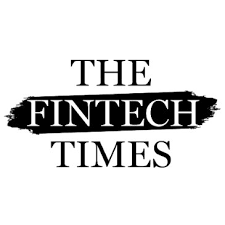by Polly Harrison November 11, 2020
A new report has found that a new, cross-sector blockchain could help aid agencies respond to increasingly frequent and complex crises, and provide significant cost savings. The technology would allow humanitarian groups to reach more people at a time when aid spending is under pressure from shrinking government budgets and priority is given to the Covid-19 response, according to the report by hiveonline, the Danish Red Cross and Mercy Corps.
It is estimated blockchain and other distributed ledger technologies could deliver significant savings for aid organisations and donors by reducing costs and transaction fees, while also offering the potential to improve monitoring and evaluation processes. Key uses cases identified included cash and voucher assistance, supply chain management, and donor engagement.
“A humanitarian blockchain could provide much-needed cost and time savings, and increase trust, as the coronavirus pandemic threatens to slash aid budgets,” said Sofie Blakstad, CEO and founder of hiveonline. “Our survey of experts found the humanitarian sector could benefit enormously from recent advances in fintech and distributed ledger technology.”
The report, ‘The Next Generation Humanitarian Distributed Platform’, found that some NGOs had developed blockchain-based solutions for specific purposes, including Oxfam’s Smart Donations program, which allows donors to set parameters for the use of their funds.
However, the humanitarian sector has typically relied upon often outdated, proprietary technology solutions for managing and releasing aid, creating a risk of data loss, errors and duplication of efforts across organisations.
The authors called for the development of a shared, sector-wide “blockchain for good” to allow the aid sector to better automate and track processes in real-time and maintain secure records. This would help modernise and coordinate the sector to reach more people as increasing threats such as pandemics, climate change and natural disasters require aid to be disbursed faster, more widely and efficiently.
A cross-sector blockchain platform – a digital database that can be simultaneously used and shared within a large decentralised, publicly accessible network – could support applications ranging from cash and voucher distribution to identity services, natural capital and carbon tracking, and donor engagement.
The report authors called for the creation of a committee to develop cross-sector governance and coordinate the implementation of a shared “Humanitarian Distributed Platform”. The authors believe the technology can help organisations fulfil commitments made to transparency, collaboration and efficiency under the Humanitarian Grand Bargain.
Ric Shreves, Director, Emerging Technology at Mercy Corps, said: “Lacking a consortium focused on developing this technology, we are at risk of falling into the old pattern of individual, siloed development efforts, an approach that is proven to be both expensive and inefficient. To change this, donors and agencies alike need to collaborate but also to invest in the creation of a shared blockchain for good.”
In the past, the technology has been used for cash and voucher assistance (CVA) programs, including blockchain-based community inclusion currencies launched by the Red Cross and Grassroots Economics Foundation to supplement cash-based interventions in Kenya.
At the height of the pandemic, more than 500 people a day were signing up to community inclusion currencies to use the e-vouchers for food, soap and other essentials and fill the need for cash. The blockchain-based project is estimated to have resulted in savings of 35% to 40%
Databases can also be used to provide identity certificates and securely store ownership records, report efficiently to donors and manage supply chains.
A number of blockchain projects have emerged in environmental conservation and climate change applications aimed at reducing carbon emissions, incentivising carbon projects, or rewarding producers of renewable energy.
But challenges remain to the broad application of blockchain technologies, such as technological and structural challenges in the way humanitarian projects are funded. To overcome these, aid agencies and donors need to ensure sufficient investment and collaboration.
“Blockchain, as a globally accessible, distributed database, has the potential to be useful to a wide number of people, and within the Red Cross we are always looking into new innovative solutions that can enable us to help more people. The findings of the report are highly interesting for the humanitarian sector,” said Signe Yde-Andersen, head of the international department at the Danish Red Cross. “This report is a call to action for a blockchain for good, to drive investment and unlock innovation in the sector.”
The report is compiled from responses of 35 survey participants, representing stakeholders in the humanitarian sector, including NGO project implementers, consultants, blockchain developers, academics, and founders. A further 39 direct interviews took place over the course of the research between July and September 2020.
Find us in the Fintech Times: https://thefintechtimes.com/new-report-finds-common-blockchain-for-good-would-help-humanitarian-sector-build-more-trust-and-efficiency/
